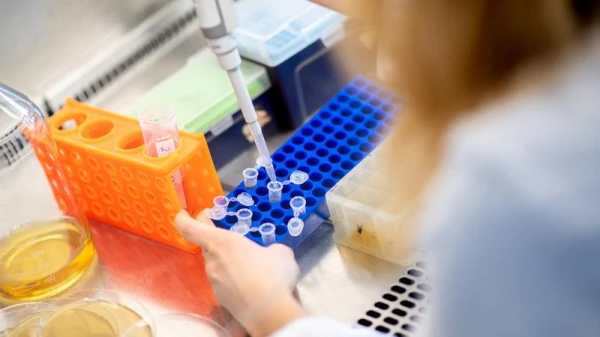
COVID is still with us and will remain for a long time, scientists repeat. It is important that it does not acquire new properties and does not transform into a pathogen that will cause a powerful wave of illness comparable to the deadly years of 2020–2021. And such risks exist.
The Omicron variant BA.3, which was discovered back in 2022, continues to evolve, said geneticist Dmitry Pruss on social media. Such conclusions can be drawn from a new genomic sample from October that arrived from the Netherlands.
“The previous BA.3 sample from the Netherlands was dated August, and there was hope that the overwhelming prevalence of XFG family strains had finally displaced the extreme mutants of group BA.3. But no, in the new upload, 90% is XFG, but the latest BA.3 sample is also present. Alive, the smoking gun… and since it is transmitted, it continues to evolve. The potential for BA.3 to turn into a pathogen of a new wave, with its level of invulnerability to our antibodies, is serious…,” Dmitry Pruss reported.
According to him, this ultra-mutant may already be dominant in Western Australia, as indicated by the October samples.
What is dangerous about BA.3
The Omicron variant, sublineage BA.3, was studied in 2022, and research was published in scientific journals. Scientists were seriously concerned about the virus's persistent ability to evade antibodies.
“Our antibodies are practically powerless against this strain, but fortunately, so far it has lagged in transmissibility and cannot become a global threat without additional mutations. We are waiting to see if its ongoing evolution will bring it such a gift…,” summarizes Dmitry Pruss.
He also added that the deletion of two codons at the furin cleavage site found in BA.3 raises concerns at this time — a breakdown in the protein activation mechanism.
“This has never been observed before — in the entire history of the pandemic. The furin site in BA.3 was already very unusual, and I wouldn’t dare to predict what the new, just-emerged mutation will do to the virus's biology,” concludes the geneticist.
Currently circulating are the Stratus and Frankenstein strains
The new family of SARS-CoV-2 XFG viruses has been named “Stratus” and “Frankenstein.” These are hybrids of Omicron, and they are the ones causing an increase in COVID-19 cases in Europe during the summer and autumn of 2025. They are characterized by high transmissibility, but the disease mainly manifests in a mild form.















Leave a comment